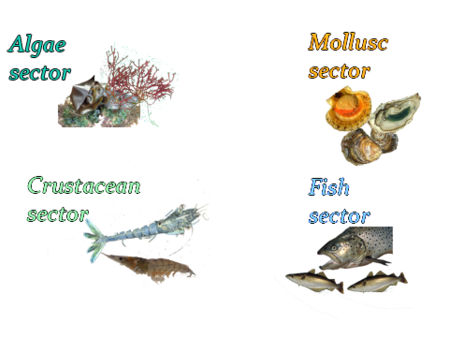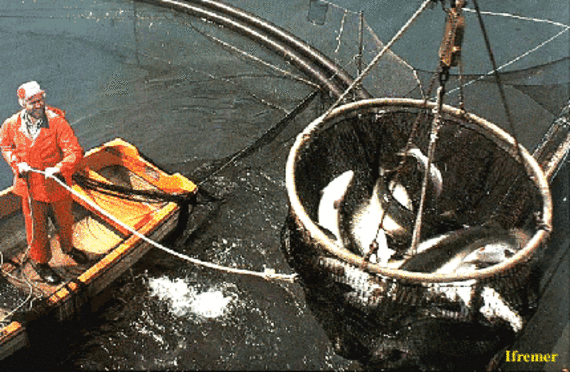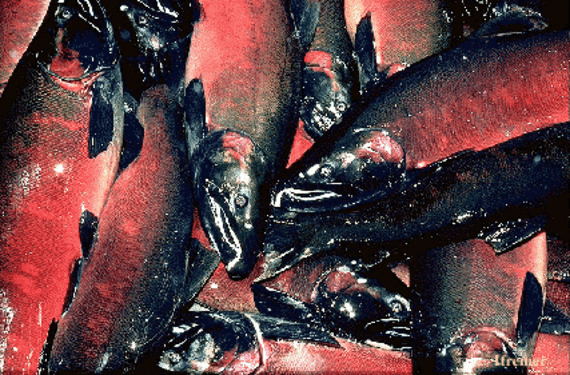Salmon production
Salmon production (fisheries and aquaculture)
The salmonid family includes both salmon and trout
FAO 2007 (2005 data)
Total production has been increasing steadily over the last 20 years due to growth of salmon aquaculture, while fisheries production has remained constant at about 1 million tonnes per year.
Salmonid Aquaculture
Intensive salmon farming | "Sea ranching" |
Rearing of salmon and trout in captivity in fresh or salt water | Extensive exploitation of migrating salmon species |
The Salmonidae is a small family of fish from the Northern hemisphere. Certain are sedentary species living only in freshwater e.g. the greyling and vendace. Others, like the trouts and chars, make migrations at sea, depending on populations and environmental conditions. As for salmon, these fish make systematic migrations from fresh water to the sea. Their migration is characterised by a strong homing instinct enabling them to return, with only a small level of deviation, to the place they left. A specific system of exploitation has developed based on this capacity: sea ranching consist of releasing juveniles in fresh water and then capturing them as adults when they return to a point close to where they were released. This form of exploitation is inappropriate for fish that don’t migrate, for which only intensive production is practiced (Ifremer / Yves Harache).
Fisheries / Aquaculture production
Atlantic Salmon |
|
= aquacultural produce |
Pacific Salmon |
|
= fisheries produce |
The biological particularities of salmon species and the status of natural stocks have led to an almost exclusively aquacultural production of Atlantic salmon while Pacific salmon is mainly exploited by fisheries. For the latter species a large proportion of fry come from hatcheries. Once released, these fish grow in the sea. They then return towards land where they are caught and become a product of the fisheries.
Salmon production in different rearing environments
LMarine production accounts for a high proportion of production (79%) with Atlantic salmon the most highly represented species. In freshwater, rainbow trout is dominant.
French salmon production is described elsewhere: link
FAO 2007 (2005 data)



